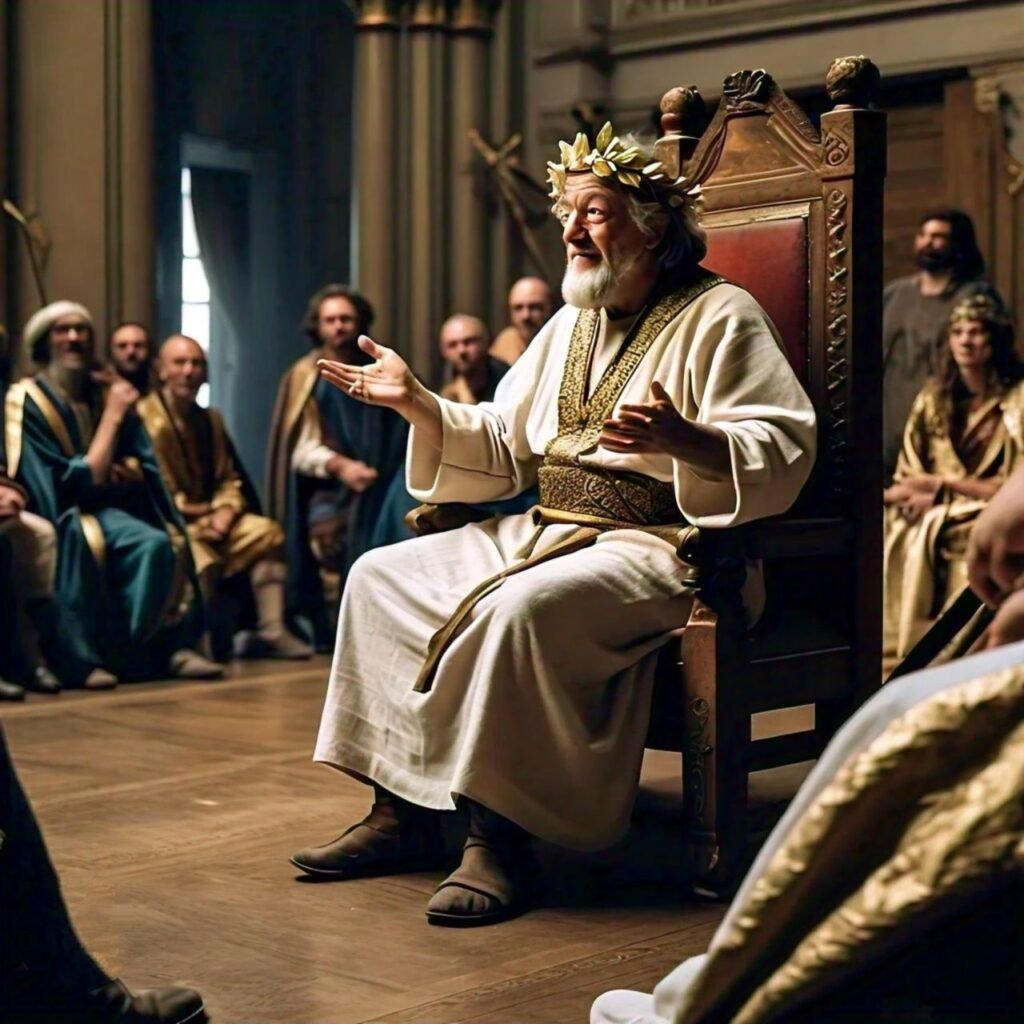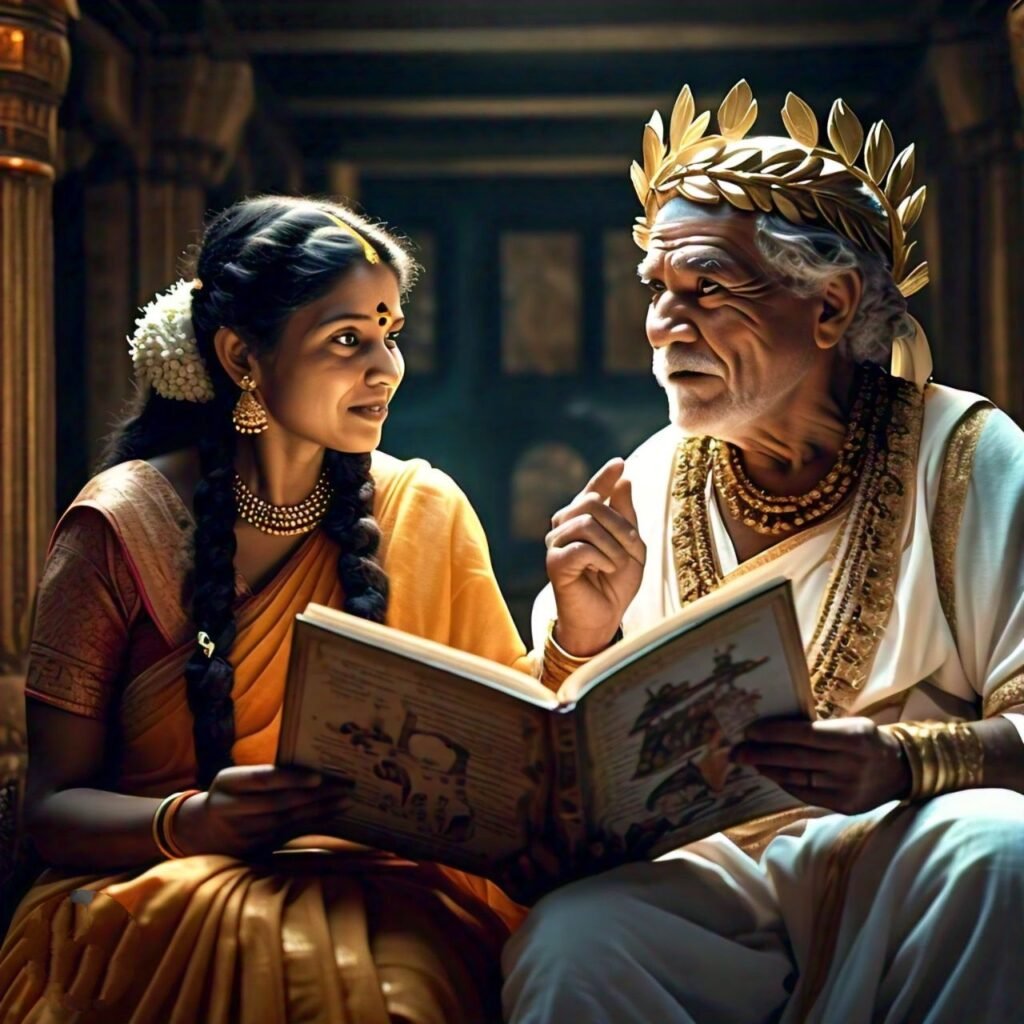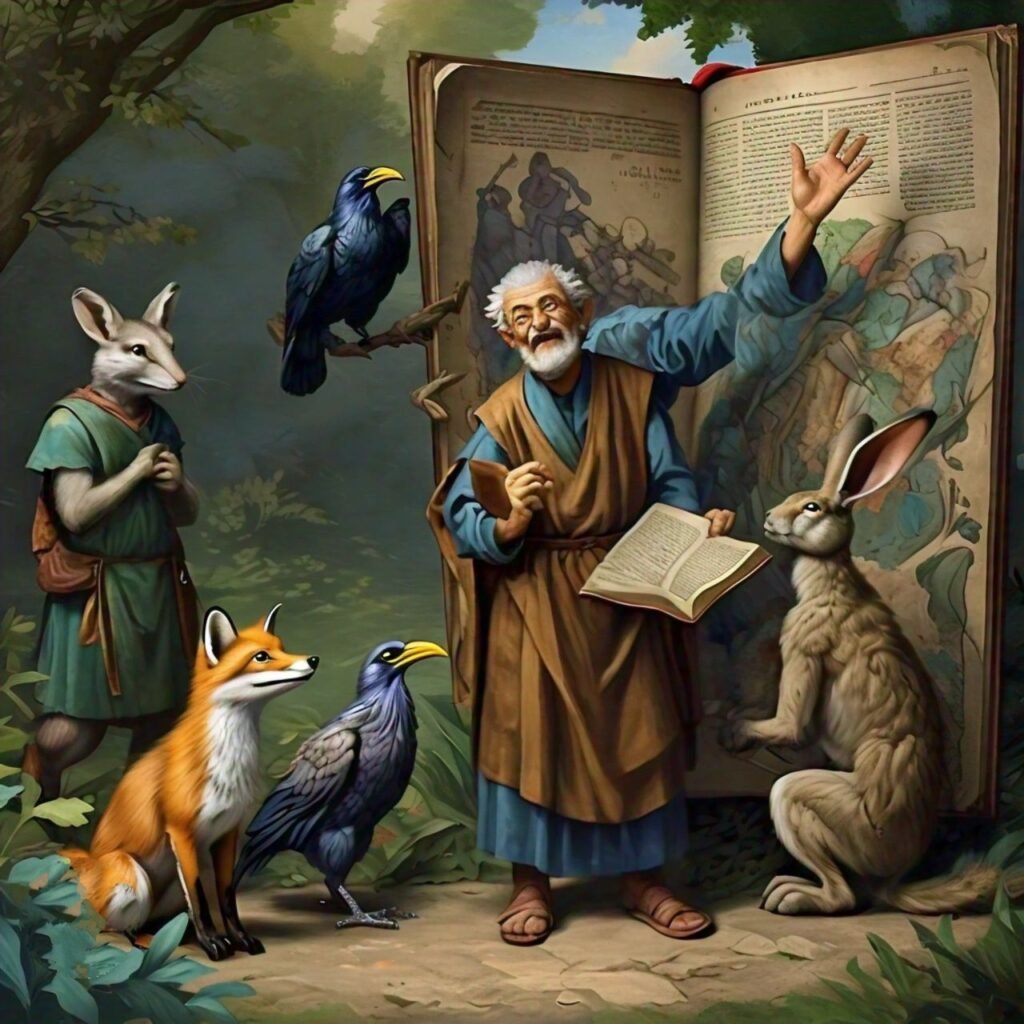
Many questions with regards to Aesop’s Fables have been asked by the Curious Minds of the laymen, such as:
Who wrote the Aesop’s Fables?
Did Aesop himself write all these stories?
How old are these Fables exactly, and When were they written?
What purpose do Aesop’s Fables serve for readers?
Are Aesop’s Fables relevant in today’s modern times?
I have tried to answer these intriguing questions below, and I hope it satisfy my viewers’ curiosity.

At some point between 620 and 560 B.C., a man named Aesop, who was once a slave but had gained his freedom, arrived at the court of Croesus, the last king of Lydia in Asia Minor. While still a slave of ladmon on the island of Samos, he had gained some local fame for himself and considerable prestige for his master as a narrator of tales about animals.
By the time he reached Sardis, Aesop, the former slave, was already famous. He joined other wise thinkers like Solon of Athens and Thales of Miletus at the court of Croesus, a great supporter of learning and knowledge during that era. There is no doubt that the former bondsman quickly grew in favor with Croesus as a result of his shrewd intelligence and native wit, plus a certain amount of well-directed flattery. It would be a mistake, however, to look upon Aesop as a sort of court jester, for while he came to amuse he remained to instruct, and Croesus probably learned more home truths from his fables than from all the serious disquisitions of the royal stable of philosophers.

In time, as the King acquired what amounted to practically a hegemony over the other small Greek states, Aesop began to be employed as an ambassador to the various capitals. In this capacity his shrewd use of the beast tales, or fables, stood him in good stead. At Corinth, he warned his hearers against mob law in a fable, later used by Socrates. At Athens, by the recital of ‘The Frogs Desiring a King,’ he warned the citizenry that the known tyranny of Pisistratus might be preferable to that of an unknown successor.

His visit to Delphi seems to have had less of a political objective. It was to cost him his life. Sent as a commissioner by Croesus to distribute some payment due the Delphians, he incurred the displeasure of the inhabitants of that important city. The story goes that as he was ready to leave on his homeward journey to Sardis, a gold cup from the temple of Apollo was found in his baggage where it had been planted.

Charged with impiety and sacrilege, Aesop was brought to trial. For once his ready weapon failed to serve him. He is said to have appealed to the Delphian reverence for the laws of hospitality with the fable of The Eagle and the Beetle, but he appealed in vain. The enraged guardians of the temple, feeling perhaps that their sinecure might be in danger, condemned the ambassador of Croesus to be hurled to his death from a high cliff outside the city.

We are told that the conscience-smitten, Delphians lived to regret the violent death of Aesop. After a succession of disasters, the harried citizenry offered reparation for the envoy’s death. It was awarded to the grandson of Iadmon, Aesop’s old master. The proverb of “Aesop’s blood” in aftertimes gave warning to his Countrymen that a murdered man’s blood will not cry to heaven in vain.
But the fame of Aesop lived on. About two hundred years after his death his statue, carved by Lysippus, was erected at Athens, and it was placed in front of the statues of the Seven Sages.

We know that Aesop never wrote down any of his fables, and we know, also, that the first recorded compilation of the tales that bear his name was not made until nearly three centuries after his death, but for generations it was deemed an indispensable accomplishment of an Athenian gentleman to be able to tell a good story of Aesop’s at the club. His practical wisdom was as highly regarded as his caustic humor. The common tradition that he appeared alive again and fought at Thermopylae speaks more for the honor in which he was held as a patriot than a hundred more plausible anecdotes could do.
Did Aesop invent the fable?
No. He merely used a form of the beast tale whose origin can be traced back to many Eastern nations. It was natural among primitive people to compare human motives and acts with the ways of the wily fox, the timid deer, and the noble lion. It followed that the animals of forest and barnyard should be endowed with human passions and feelings, and even with human speech. The fable in those early times was not a child’s plaything. It was a nation’s primer.
Did you know that fables were used to educate and enlighten the masses of the present situation in the olden days ?
In Greece, during the times of the Tyrants, when free speech was dangerous, the fable began to be used for political purposes. It was in this field that Aesop developed the ancient beast tale which flourished in India long before. When neither kings nor mobs could be made to look upon the naked truth. Aesop found that this style of primitive wisdom furnished an effective garb with which to clothe it. Tyranny and rebellion alike were stayed by this offhand, ready-made weapon of the man of action who united presence of mind with presence of wit. Even when free speech was established among the Hellenic democracies the custom of using fables in serious public orations as well as lighter after-dinner speeches continued.

About three centuries after Aesop’s time, Demetrius Phalereus of Athens, founder of the Alexandria Library, collected the fables he could find under the title “Assemblies of Aesopic Tales”. There were about two hundred fables in the compilation. Later, a Greek freedman of Augustus Caesar, named Phaedrus, in the early years of the Christian era turned them into Latin iambics. Later still, in the time of Marcus Aurelius, Valerius Babrius, a tutor to the young son of Alexander Severus, merged with the Aesopic fables a collection of Indian, or Libyan, beast tales. In the 1300’s, a monk of Constantinople, named Maximus Planudes, compiled a definitive book of fables. Each collector and each translator added and changed and edited and inserted. From all these various sources the bulk of the existing fables is derived. All the anachronisms, the mixtures of pagan and Christian forms of speech and sentiment, are indications of the many hands through which the original fables, many of which had their origin in Ancient India, passed.

Despite the wear and tear of twenty-five centuries, the spirit and the body of Aesop’s fables are still intact, if not as they proceeded from the lips of the ex-slave in the court of Croesus, at least as they were known in the best times of Greek literature.
To Encapsulate all the above:
Over 2,000 years ago Aesop, a Greek slave, won his freedom by entertaining the nobles in the court of the King with his witty and fascinating tales of animals who could talk like humans. Aesop’s Fables is a collection of these best-loved tales of animal adventure and courage including Androcles and the Lion, The Fox and the Grapes, The Wolf in Sheep’s Clothing, The Goose with the Golden Eggs and many more.
So, relax and enjoy the best-selected fables of Aesop on Bedtime Stories for All.

- 14 Best Panchatantra stories in hindi
- 15 Best Children Stories in English from Panchatantra 2.0
- 16 Best Aesop's Fables in Hindi with moral lessons
- 17 Best Aesop's Fables with moral lessons for children
- Arabian Nights
- Author's Best Written Stories in English
- Author's Best Written Stories in Hindi
- Baital Pachisi बैताल पचीसी in Hindi
- Bedtime Stories for All
- Hindi Love Stories
- Love and Romance
- Vikram and Betal series: Riddle Solving Stories
You can join my WhatsApp Channel by clicking the link here



